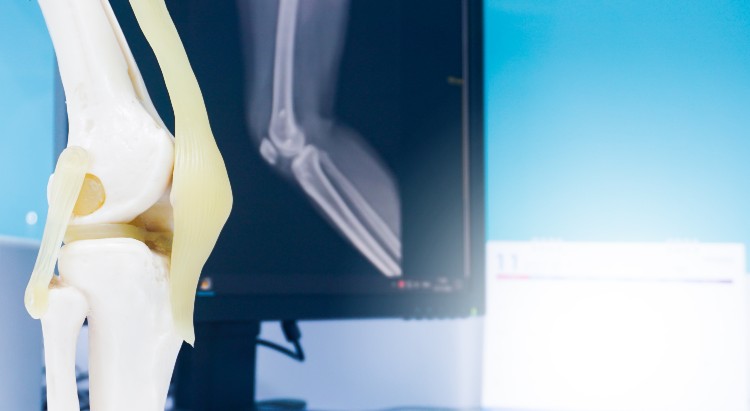
An osteotomy is a surgery that involves bone realignment. Osteotomies are critical strategies in the management of cartilage disorders, as overwhelming evidence shows that reducing the amount of stress on an area of cartilage damage or cartilage surgery greatly improves success rates and lessens the likelihood of further cartilage wear. In order to maximize the outcome after a cartilage surgery, osteotomy is often added.
High Tibial Osteotomy (HTO)
An HTO is an osteotomy procedure that shifts body weight and stress from the medial (inner side) of the knee to the lateral (outer) side. The tibia (shin bone) is cut and realigned, then held in place with a plate and screws to heal in this new position. It is performed for localized arthritis on the inside part of the knee, or when a cartilage procedure is performed on the inner side of the knee.
Distal Femoral Osteotomy (DFO)
Similar to an HTO, a DFO is used to unload the lateral (outer) side of the knee and shift stress to the (medial) inner side. Here, the femur (thigh) bone is cut and realigned. It is often used for knock-kneed patients with arthritis of the lateral (outside) part of the knee, or in combination with cartilage procedures performed on the outer side of the knee.
Tibial Tubercle Osteotomy (TTO)
This type of osteotomy is used to reduce stress on the underside of the patella (kneecap), and to improve patellar tracking. It is commonly used for the treatment of patellar dislocations, and for patients with arthritis or other cartilage injuries behind the kneecap. It is often a critical component of any surgery involving repair or transplant of the kneecap cartilage.
Ligament Surgery
In order for any cartilage surgery to be successful and long-lasting, the joint must be stable, so as to avoid excessive or abnormal stresses on the cartilage. Accordingly, any knee that undergoes a cartilage procedure must have any associated ligament tears or abnormalities addressed.
